Beneficial
tumblebug
Family: Scarabaeidae Subfamily: Scarabaeinae Genus: Canthon Species: Canthon humectus (Say, 1831)
none available
Total body length 10.0–17.0 mm (0.39–0.67 in). Body shape round (dorsal view); may be caked in dried dung. Color dark blue-black; weakly metallic. Eyes crescent shaped; longer than wide. Clypeusclypeus:
part of the head anterior to the frons; the most anterior portion in dorsal view
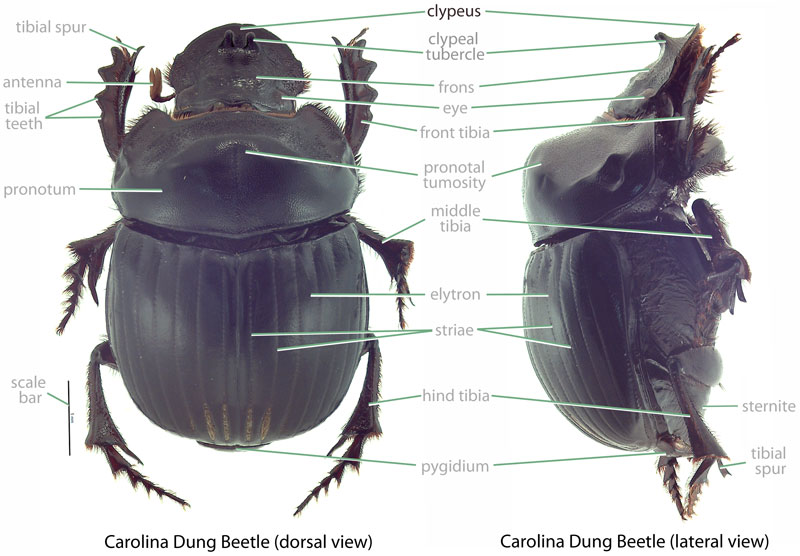 bidentatebidentate:
bidentatebidentate:
a surface that is sharply notched, usually resulting in two tooth-like protrusions on each side of the notch
; surface smooth, never coarsely granulategranulate:
relating to a coarse, grainy surface texture
. Pronotumpronotum:
the dorsal surface of the thorax
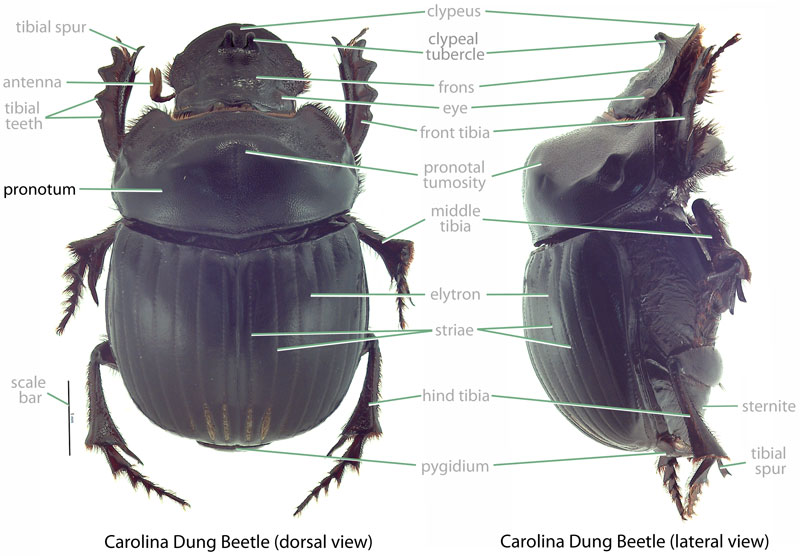 and elytraelytra:
and elytraelytra:
the hardened and chitinous wing-cover of a beetle that protect and overlie the flight wing
smooth, never coarsely granulategranulate:
relating to a coarse, grainy surface texture
. Front tibiatibia:
a segment of the leg articulated with the tarsus and femur
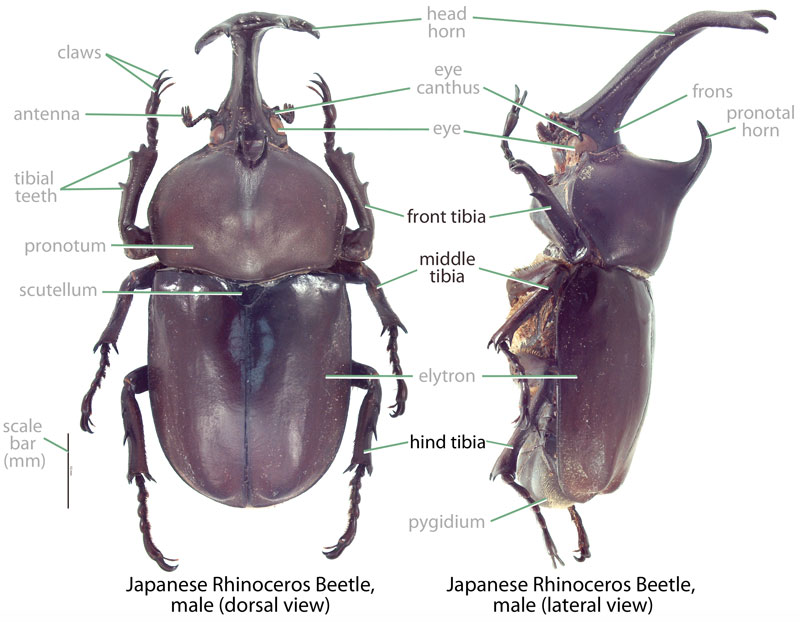 with apical spurspur:
with apical spurspur:
movable, spine-like process, sometimes mobile, often found at or near the tibial apices
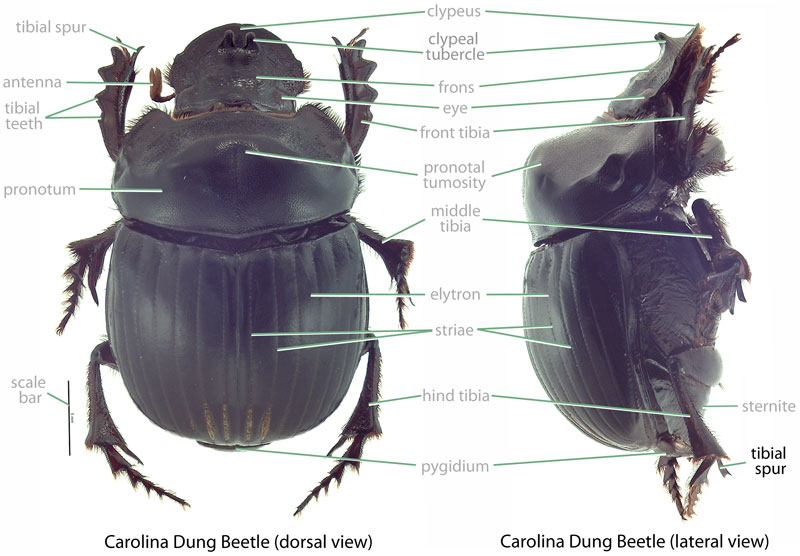 bifurcatebifurcate:
bifurcatebifurcate:
a process dividing into two points
in male and spine-like in female (spur may be worn down in older individuals). Middle and hind legs elongate. Pygidiumpygidium:
the last abdominal segment, usually exposed, not completely covered by the elytra
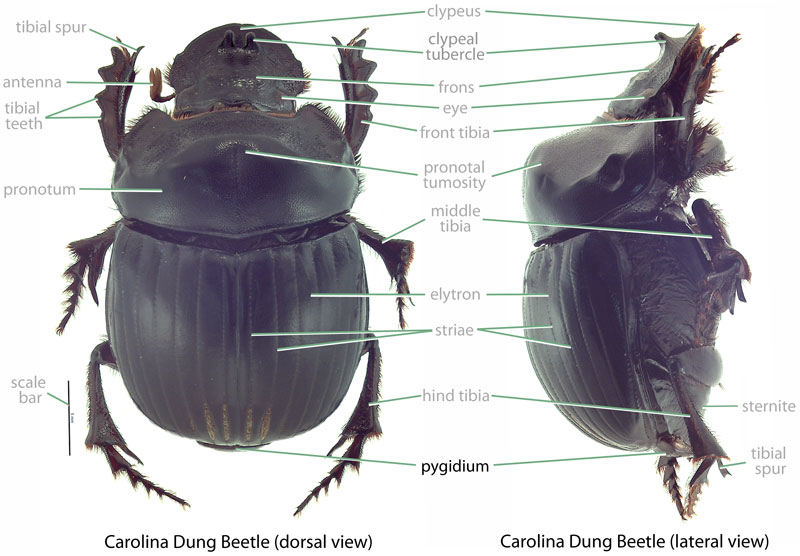 width more than twice height.
width more than twice height.
Undescribed. For Canthon spp. (Ritcher, 1966Ritcher, 1966:
Ritcher P. 1966. White grubs and their allies: a study of North American scarabaeoid larvae. Oregon State University Monographs, Studies in Entomology 4: 1-219.): Grub C-shaped,hump-backed, cylindrical, whitish. Prothoracic shieldprothoracic shield:
the chitinous plate behind the head of larvae
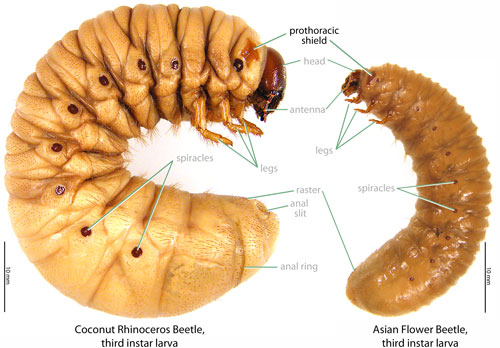 with anterioranterior:
with anterioranterior:
the front or forward; opposite of posterior
projecting, angular process on each side. Legs each with a single long, terminal setaseta:
small, hair-like structure
surrounded by numerous short setae; 2-segmented; without stridulatory structures; claws absent. Anal slit transversetransverse:
extending horizontally across a surface
.
Central Mexico to Guatemala. This species is known primarily from the high plateau of central Mexico, though it has been recorded south to the highlands of Guatemala (Halffter et al., 2011) and north to the Mexican state of Sonora (Navarrete-Heredia, 2012Navarrete-Heredia, 2012:
Navarrete-Heredia J. 2012. New state records for Coleoptera in northern Mexico. The Coleopterists Bulletin 66: 74-65. full text).
None. This species feeds on dung as both an adult and larvalarva:
the immature form of an insect; in scarabs, also called grub or white grub; preceded by the egg stage, followed by the pupal stage
 (Ortega-Martínez et al., 2014).
(Ortega-Martínez et al., 2014).
Similar to other Canthon spp., this diurnaldiurnal:
active during daylight hours
scarab is a dung roller (Ortega-Martínez et al., 2014). It is known primarily from elevations between 1,200–2,000 meters (3,900–6,500 ft) where it occurs in pastures, shrubland, and rarely in open forests (Halffter et al., 2011). In central Mexico, it is amongst the most common dung beetle species found in cattle pastures and shows a strong affinity for cattle droppings (Ortega-Martínez et al., 2014). Males arrive at droppings and shape a portion of dung into a ball. The dung ball is then rolled, or "tumbled", away from the initial dung source. Females do not roll dung but may passively ride atop the ball. Adults may consume the dung ball, or a single egg may be deposited in it and then buried in the soil by the male for larval consumption (Ortega-Martínez et al., 2014).
None. This species recycles dung and is beneficial for ranching and farming in Hawaii. Being a dung feeder, this species poses no threat to crop or ornamental plants. Additionally, this species is not a threat to native dung beetles because none occur in Hawaii or Guam.
Established. This species was intentionally introduced to Big Island twice (once in 1923 and again in 1952) to help control populations of the horn fly (Haematobia irritans), a biting pest of livestock (Markin and Yoshioka, 1998Markin and Yoshioka, 1998:
Markin G and Yoshioka E. 1998. Biological control of the horn fly, Haematobia irritans L., in Hawai'i (Diptera: Muscidae). Proceedings of the Hawaiian Entomological Society 33: 43-50. full text (accessed 2015)). It is also known from Maui (Nishida, 2002Nishida, 2002:
Nishida G (editor). 2002. Hawaiian terrestrial arthropod checklist, fourth edition. Bishop Museum Technical Report 22: 1-313.).
Not established or recorded. There are no records of this species from Guam.
In Hawaii, this species was intentionally released.
This scarab is one of four Canthon species recorded from Hawaii (none are known from Guam). It is distinguished from the other Canthon species recorded in Hawaii by examination of the pronotal texture (texture smooth in Canthon humectus versus coarsely granulategranulate:
relating to a coarse, grainy surface texture
in C. pilularius), color (dark blue-black in C. humectus, versus dark metallic green in C. indigaceus, velvety black to green in C. pilularius, shining green or red in C. viridis), size (10.0–17.0 mm [0.39–0.67 in] in C. humectus versus 2.0–4.0 mm [0.08–0.16 in] in C. viridis), and pygidiumpygidium:
the last abdominal segment, usually exposed, not completely covered by the elytra
 shape (pygidium width more than twice the height in C. humectus versus width less than twice the height in C. viridis, C. pilularius and C. indigaceus).
shape (pygidium width more than twice the height in C. humectus versus width less than twice the height in C. viridis, C. pilularius and C. indigaceus).
Canthon amythestinus Harold, Canthon gagatinus Harold
Report your observation of this beneficial species at our iNaturalist project.